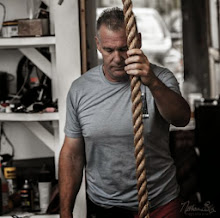I have a wonderful human client--I feel like I need to clarify the species--who has extreme shoulder restrictions on one side. I don't want to write about the mechanics of the human shoulder girdle--the most complicatedly orchestrated joint complex in the body--suffice it to say if one part of the girdle isn't working properly it can reflect pain to other parts of the girdle.
In the case of this client there was/is a restriction in the soft tissue scapula on thorax portion of the shoulder girdle which prevents the shoulder from rotating when the humerus is abducted over the head--the scapula has to rotate to accommodate the deltoid tuberosity's "bumping" into the glenoid fossa. What happens is that the nervous system rather than damaging the joint causes the arm to abduct across the clavicle when the arm reaches 105+ degrees.
The client wants to raise his arm. This is his measure of success or shoulder freedom. But each time he raises his arm to test two things occur: 1. the movement is prevented by the lack of scapula rotation so the arm is abducted across the clavicle 2. the pattern of abherrant motion is more ingrained in the nervous system.
I see the same thing happening in the horse world, where riders are not happy with their horse's foreleg extension and try to stretch the leg to increase this. The problem is that the horse's gleno-humeral joint has to accomodate the greater and lessor tuberosities and rotate out of the way. When we passively stretch the leg--the only kind of stretching we can do with an animal--we are not engaging the nervous system to rotate the scapula and can impinge, during the stretch, on the gleno-humeral joint.
Often these horses with restricted movement that have been "over" stretched will have over developped and hypertonic supra and infra spinati, which are gleno-humeral stabilizers.
To increase fore limb extension we have to assure that the horse has scapula that are free to rotate.
Tuesday, June 23, 2009
Subscribe to:
Post Comments (Atom)




No comments:
Post a Comment